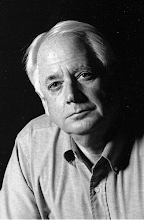In 1947, at the end of World War II there were about 7.9 million Americans living and working producing food and materials in agriculture. By 1998 that number had dwindled to 3.4 million. BY the year 2007 it had further eroded to 2.2 million. So what happened to all the farmers? Where did they go? What did they do instead of living on their farms? Why did they leave farming?
While each farmer assuredly has their own individual story about why they left and where they went, collectively there are identifiable reasons. But the one overwhelming cause was the Federal Government. And the shift in populations was perhaps the greatest relocation of people ever accomplished under government coercion. While the US Government did not use the forcible methods of a totalitarian regime such as Pol Pot in Cambodia, they never-the-less accomplished a similar relocation of people. Only in this case people went from a rural existence that was tremendously productive to an urban life that was marginally productive.
With thousands of men returning from the war and the nation on a war economy there was little work for all of them. During the war years the government had erected numerous agencies and enacted many regulations to martial the country’s economy to wage the war. So the government used those same powers to do what many people probably thought was a good thing.
They enacted the G.I Bill which allowed thousands of men to attend college. They created the Veterans Affairs programs to provide returning veterans with support, health care, and training for employment. And they offered subsidized loans for housing so the returning veterans could afford to buy homes and establish families that had long been postponed to defend the country. While intended to reward courageous veterans and defend against economic chaos with so many out of work, these measures also enticed many men to leave the farm and move to the cities where they created overcrowding and urban sprawl.
Men who had been independent business men and farmers now became industrial employees in manufacturing and industry. Others joined the burgeoning crowd of service and white collar workers living in suburbia.
To pay for these measures and the war debt that had accumulated the government raised taxes, of all kinds and all levels. The growing cities saw increased demands for space and services. In order to raise funds for local expenses such as schools, roads, fire and police protection they raised property taxes. But property taxes became a two edge sword. While it raised funds to care for the displaced workers moving to the cities, it raised the cost of farming thus driving more people from the farm.
A well-managed farm of thirty of forty acres can support a family in an almost self-sufficient manner, with a little to spare to sell for cash and to support their local neighbors. But such a family farm could not generate enough money to pay the increased tax burden. More farmers were driven from their farms by higher taxes and into the cities, thereby increasing demand for services and yet higher taxes.
Those who left the farms either attended college and became white collar and service workers, or entered into the building trades and work in manufacturing plants. In the latter occupations, independent men increasingly found themselves employed in settings that were restrictive and dehumanizing, controlled more as machines than men. In response, the movement to unionization that had occurred before the war in response to poor work conditions continued.
While union leaders are often seen as corrupt and greedy, the rank and file members were usually more interested in gaining some independence and control of their lives and decisions, a little more like the independent farmers and businessmen that they had been. But their discontent usually became translated into higher pay and fewer working hours.
So today America is overwhelmingly urban and either white collar, service, or unionized. White collar workers and service employees do not produce product. Expensive union labor has taken America out competition for production.
Agriculture does not have to be based on huge farms of thousands of acres to be successful. Small farms and manufacturing units can be successful, and in some overall way be healthier for the country. There are alternative ways of organizing the country that can be imagined. But they cannot probably be accomplished under present law and government regulation.
There are many people clamoring for lower taxes and reduced government interference. But it is not enough to just proclaim the need to reduce government regulation. There needs to be some kind of vision of what the country can be, and needs to become, so that the regulations can be reduced or changed in specific ways. What those ways are not being addressed by our current leaders, even those who are involved in the so-called Tea Party.
It is shortsighted to complain about the past and criticize present policy without offering solutions. In my next blog I will try to sketch out an alternative view and suggest policies that might help to make America productive.





